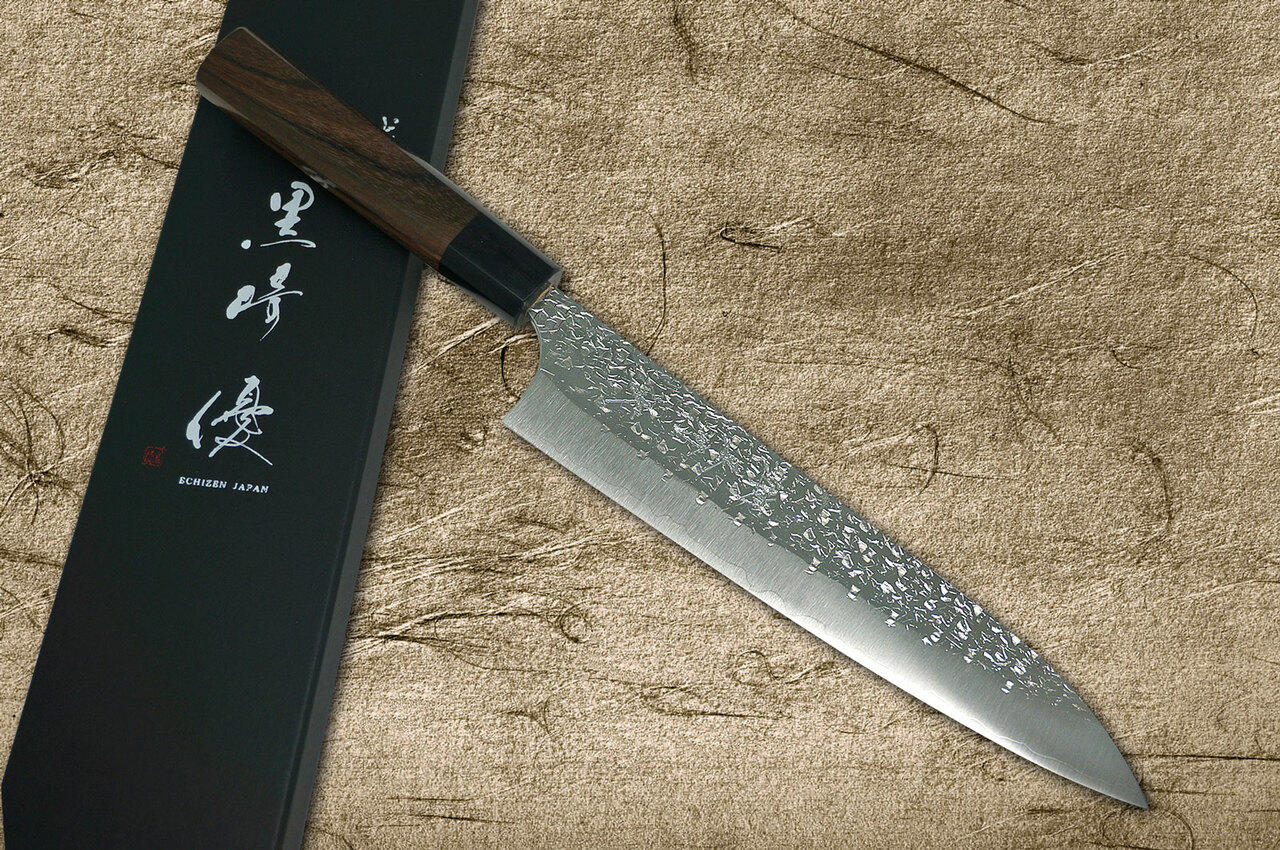
Yu Kurosaki R2 (SG2) Hammered SHIZUKU WA RS8B
img by : https://www.hocho-knife.com/
If you’re a Japanese food lover, a gourmet, and a passionate food taster with the ability to determine and detect just the slightest changes in flavors or scents of dishes presented to you, then each and every single dining experience is definitely something to remember. As Japanese cuisine is often referred to the world’s most intricate and delicate cuisine, winning the hearts of diners worldwide with its authenticity and creativity in the fine selection of ingredients, Japanese dishes like sushi and sashimi are the two most well-known of all.
The high-end aesthetics, imaginative blends of liquid condiments like authentic soy sauce with Wasabi paste, the vivid-colored selections of components, and the Japanese traditional techniques and skills to craft culinary pieces of art have always been the main reasons behind Japanese cuisine and its huge success. If you’re a big fan of Salmon sashimi, Fatty Tuna sushi, and even Maki rolls, a dining experience at an Omakase restaurant will introduce you to the magic of the true Japanese food making process, as the elegant wooden sushi bar or sushi table will showcase the skills of the Japanese blade – one that perfectly crafts all premium quality culinary wonders.
As intricacy is greatly related to the complicated processes of Japanese food preparation, it is known to all Japanese food fans that the mastery of the Japanese knives is highly essential – these techniques and skills are required to master sushi and sashimi menus. The accurate slices, perfect chops, and powerful cuts of the Japanese blade will determine the final tastes of a dish; therefore, Japanese chefs and culinary professionals find the skills of the blade more than just a typical component required to craft delicate menus, but the key to Japanese food.
Japanese knives or ‘Wa-bochos’ are forged and made to cut through varying ingredients with ease.
These blades are special and extraordinary, as they equip a unique blade style of being super narrow and thin, offering great balance during grips.
A Japanese knife may be different from that of the usual, typical Western kitchen knives in appearance. However, various blades are as well forged for varying uses; for example: a Sujihiki knife for slicing, Gyuto as a multi-purpose or a beef-slicing knife, a Japanese chef’s petty knife, and a Nakiri knife for the cutting of vegetables. Unlike ordinary knife models suitable for normal kitchen use, Japanese blades are made out of extremely high-quality steel with HRC or a Rockwell hardness value ranging from 60-62.
As these knives are especially forged for certain uses, they are made to be extremely sharp (razor-sharp), with excellent edge resistance, and high durability. If kept and well cared for, Japanese blades can last up to a decade and will definitely serve as an excellent item to have in a vintage collection of sharp objects with a beauty that strikes the eyes.
As Japan is home to numerous knife brands with premium quality Japanese knives and other culinary tools, it can’t be denied that Yu Kurosaki is absolutely among one of the best brands with unique designs, yet high-end materials. Yu Kurosaki and his highly-skilled blacksmiths offer a wide range of knife models, but ‘Yu Kurosaki R2 (SG2) Hammered SHIZUKU WA RS8B’ knife is just among the best-selling ones, crafted out of the SG2 (Super Gold 2 or R2) Micro Carbide Powder stainless steel, which is one of the world’s hardest steels.
Offering users excellent rust-resistance, long-lasting feature, and the unique SHIZUKU hammered design, this model comes with a variety of knife types to choose from, such as: Gyuto, Sujihiki, Bunka, Santoku, and Chef’s Petty. Also a beautifully designed and delicately crafted knife series, this is indeed a great knife to have in a collection of rare items.
